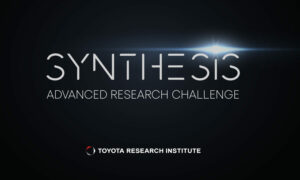
Toyota announces challenge for AI predictions of new material
By onMarket Trends | Technology
Toyota Research Institute (TRI) recently announced a multi-year multi-million-dollar challenge for AI predictions of new material that can be used in the real world, according to a press release.
“Researchers can presently use AI and simulation to find millions of novel materials at unprecedented rates,” the release says. “While this is encouraging, a bottleneck occurs when trying to create these materials in the laboratory. Developing the recipe to create even a single new material in the lab, the act of synthesis, can take years.”
Brian Storey, TRI’s senior director of Energy & Materials, says in the release that accelerating the process could advance technology such as autonomous vehicle (AV) batteries.
“That’s why TRI is trying something new,” Storey said. “We are inviting the best researchers in this field to bring fresh thinking to help close the gap between the computer and the lab.”
The Electric Power Research Institute (EPRI) and Natural Resources Defense Council (NRDC) recently released a report that says EV efficiency improvements, including improvements to batteries, are needed or the vehicles could put a high demand on the electric grid.
The report says, if no changes are made, on-road vehicle charging could be as much as 65% of today’s total electricity demand by 2050.
Efficiencies that could reduce the energy demand include reducing the weight and density of the batteries, the report says.
Yet, the report notes that the automotive industry faces challenges as it shifts to EV production, such as slow production and supply chain movement of raw materials for EV batteries.
Multiple OEMs also have said they’ve shifted to designing more affordable EVs.
Stellantis NV CEO Carlos Tavares told The Detroit News earlier this month that the company believes the weight of EV batteries will have to be cut in half over the next decade to make cars more efficient and environmentally friendly.
“They need a very significant breakthrough in terms of chemistry,” he told the newspaper. “Right now for a decent range, we are using 1,000 pounds, i.e. around 500 additional kilograms, of raw materials to create the battery pack to move the vehicles.”
In an article earlier this month, The Verge reports Elon Musk plans to use the tabless battery in a compact affordable vehicle he’s planning for 2025. Musk has said the battery will help make the vehicle’s cost similar to that of a combustion engine vehicle. The battery style is reported to be 35% smaller than the average EV battery.
Toyota hopes that collaborations made thr0ught the challenge will help them advance quicker.
“When we started TRI in 2016, one of our founding principles was that we would enthusiastically pursue collaboration with others and avoid the ‘not invented here’ syndrome,” said Gill Pratt, Toyota chief scientist and TRI CEO, in the release. “Our intention is to shave years off the new materials discovery process by creating a collaborative research challenge amongst academics and research partners around the world.”
The challenge will provide funding for four of the most promising ideas submitted for using AI and simulation to synthesize new material for EVs and other emerging technology applications, the release says.
To learn more about the challenge click here.
Toyota spends $1 million per hour on research and development, ranking seventh among all companies awarded a patent in 2023, a previous company release says. Last year Toyota received 2,667 patents.
IMAGES
Photo Courtesy of Toyota Research Institute.
